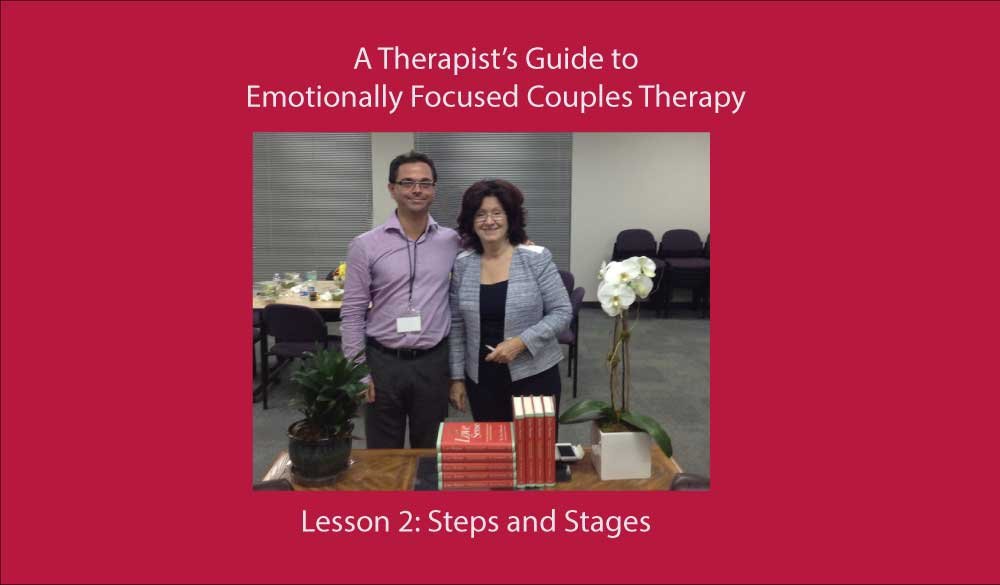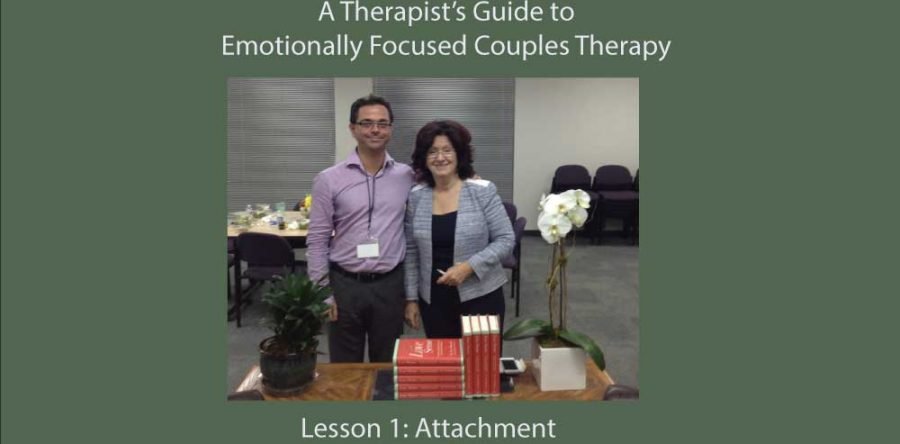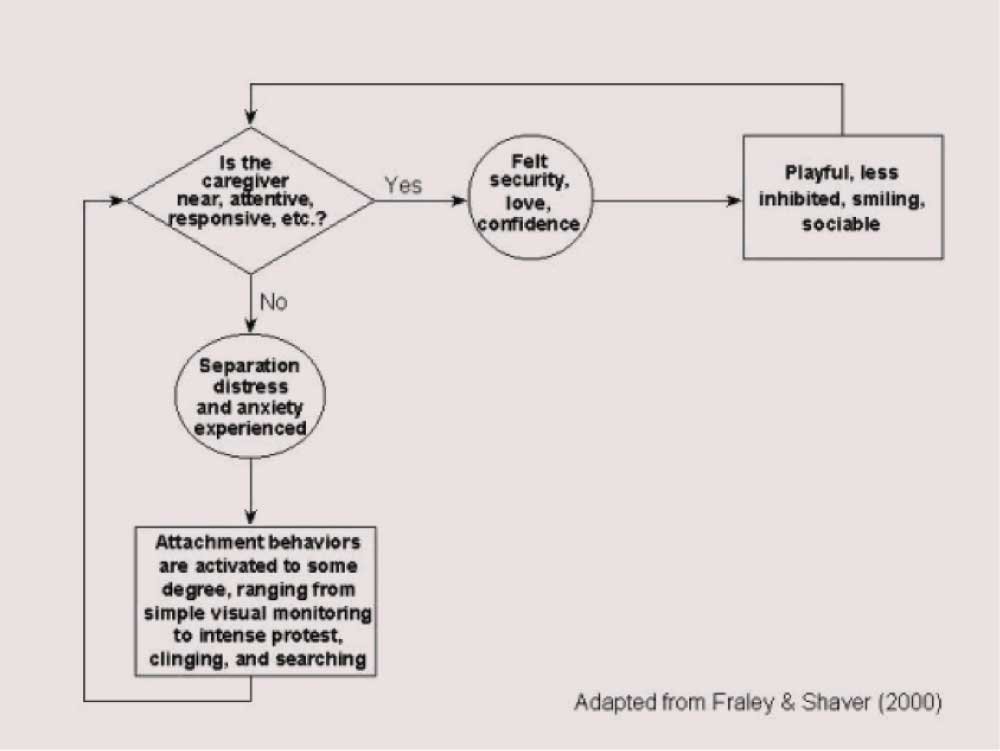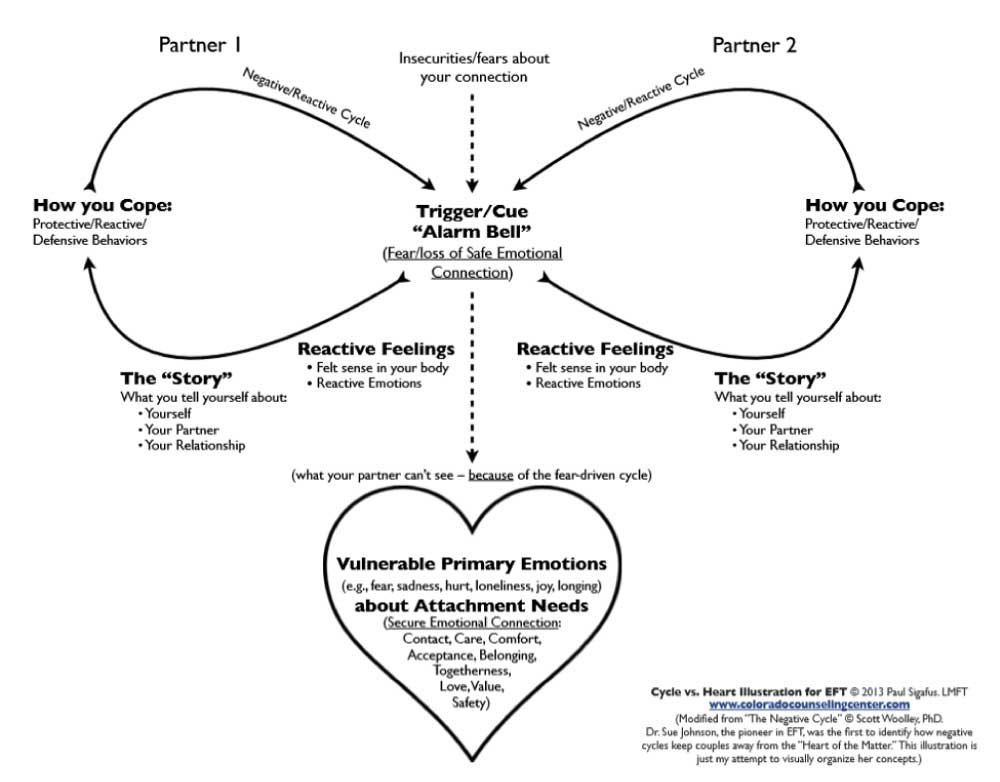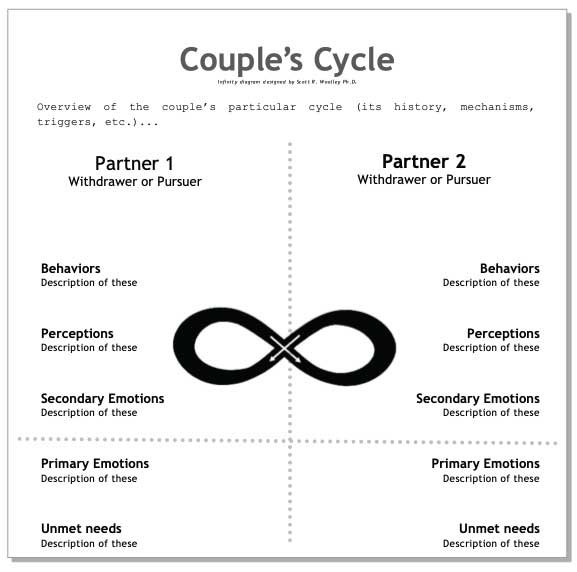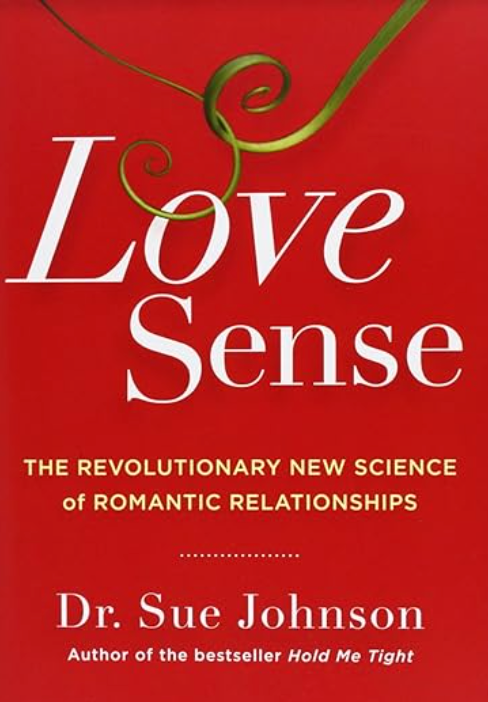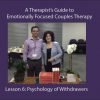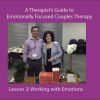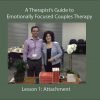Attachment Theory as the Foundation for Emotionally-Focused Couples Therapy
In my work as a couples therapist in both my private practice and at the University of Houston I have often been in a teaching role to newer therapists wanting to learn more about becoming a couples therapist. As a certified emotionally-focused couples therapist this has meant teaching newer therapists more about the EFT approach. To help convey this knowledge I have developed my own curriculum that therapists wanting to learn the approach can go through in a step-by-step fashion. I am now sharing it publicly for the first time with everyone who wants to learn. Whether you are therapist looking to deepen your skills, or a client looking for a more in-depth understanding of your EFT therapy, I believe this series of blog posts is for you.
The curriculum consists of several lessons that I will dedicate separate blog posts to over the next few months.
The lessons are as follows:
Lesson 1: Attachment theory as a foundation for couples therapy
Lesson 2: Steps and Stages of EFT/ the method of EFT
Lesson 3: tracking cycles, working with primary and secondary emotions
Lesson 4: EFT techniques, making the therapy experiential, the EFT Tango
Lesson 5: The psychology of pursuers, stage 2 change event: pursuer softening
Lesson 6: The psychology of withdrawers, stage 2 change event: withdrawer re-engagement
In today's lesson we will be looking at attachment theory as the foundation for EFT. We will see how an attachment perspective can help us shed light on why couples end up in distress and ultimately need the help of a therapist.
Lesson 1: What You will Learn
- Introduction to Emotionally-Focused Couples Therapy
- Attachment Theory as a Foundation for Understanding Relationship Distress
What is Emotionally Focused Couples Therapy (EFT)?
Emotionally-Focused Couples Therapy (EFT) is an empirically validated couples therapy method that is rooted in humanistic and experiential principles as well as an underlying theory of relationship distress that is based on attachment theory. The method was first developed by Les Greenberg and Sue Johnson who published the book Emotionally Focused Therapy for Couples in 1984. Sue Johnson has since then developed a more attachment oriented version of the model, which she has written about in the book Creating Connection: The Practice of Emotionally Focused Couple Therapy. Sue Johnson is now considered the founder of EFT for couples as it is practiced most widely, and her book is considered the primary textbook of the approach.
Book Recommendations:
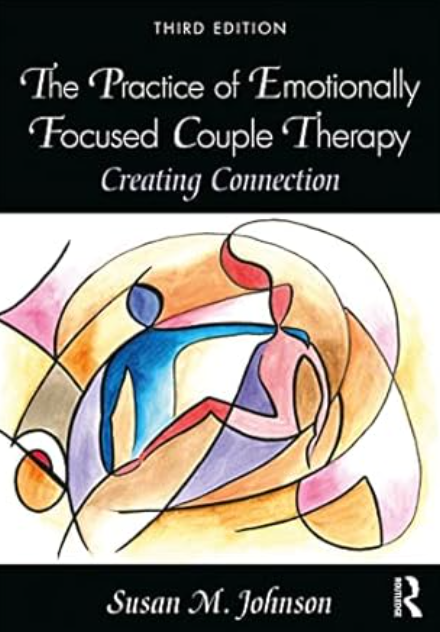
The EFT certification program, offered by the International Centre for Excellence in Emotionally Focused Therapy (CEEEFT), was founded by Sue Johnson, and specifies the procedures for becoming a Certified Emotionally Focused Couples Therapist.
To start getting oriented to EFT, go to Sue Johnson’s own professional website (drsuejohnson.com) and watch her introductory video: What is Emotionally Focused Therapy? This will give you a first overview of the EFT therapy process, interventions, and goals. Don’t worry, you don’t need to get it all at this point, we will come back to many of the ideas and study them further in later weeks.
Adopting an Attachment Framework for Couples Therapy:
A hallmark of EFT is the “attachment reframe” whereby couples learn to understand their behaviors and emotional impulses in terms of their survival or attachment meaning. At the core of EFT is the idea that threats to a secure attachment with your partner lead to strong negative reactions if the threats are not ameliorated or managed within a short period of time. These negative reactions and their reason for being mimic the behavior and experience of an infant who feels free to explore the world only as long as it has the security that it can always come back to its caregiver (secure attachment). If this security is no longer there the infant no longer feels safe and will engage in attachment behaviors to try to restore a connection with the caregiver. If these initial engagement behaviors do not restore a connection, the infant will feel increasingly distressed (separation distress), and will become angry, or ultimately shut down or turn away. (Watch Edward Tronick’s Still Face Experiment as an illustration of what happens when a caregiver ceases to respond to positive attachment behaviors by an infant.)
The attachment system is an instinctual wired in system human beings depend on for survival. An infant would die if it could not elicit a response from a caregiver to help them get nurturing and protection.
An illustration of the attachment system’s functioning as an ongoing scanning operation that monitors the environment for attachment safety or attachment threat can be illustrated as follows:
In adult relationships threats to a secure connection that are not ameliorated will typically trigger a similar response to what can be observed in the Still Face Experiment. The person who is no longer sure of the connection with their partner often channels their separation distress into angry or critical comments (in the illustration above that would be an example of an attachment behavior) that is fueled by anxiety and distress related to lack of a felt sense of connection.
In EFT we call this distressed and angry partner the pursuer. The pursuer is the person who like the baby in the experiment first feels the threat of the lack of connection and first tries to restore that connection through one or the other attachment behavior.
Unfortunately, however, the critical or angry attachment behaviors of the pursuer will often be perceived as a threat to the secure attachment of the partner who begins to worry that the relationship will fail or that they are not adequate or skillful enough to make the pursuer happy. This triggers the attachment behavior of withdrawal, whereby what we call the withdrawer goes up to the head and out of the heart, or into the self and away from the relationship, in order to shield themselves from this painful reality.
Instead of fighting for the connection through protest behavior or attempts to get attention, the withdrawer is more likely to respond to the threat to their secure attachment by trying to “solve” the problem logically to calm the situation down, or by retreating from the "danger" posed by the increasingly heated emotions of the pursuer. They do so in an effort to protect themselves and protect the relationship from further harm, even though the pursuer sees it as a sign that they don’t care and don’t want to fight for the connection. The withdrawer is often overwhelmed inside and acutely aware of the pursuer’s rejection sensitivity. As a result they don’t want to say or do the wrong thing, and don’t want to attempt to solve the problem only to fall short and make things worse. Turning away or becoming increasingly inhibited in the relationship is therefore often all the withdrawer knows how to do to solve an unsolvable problem.
The Negative Cycle of Incompatible Needs:
Due to the incompatible coping strategies of the pursuer and the withdrawer, the couple now gets stuck in a negative cycle, whereby each person’s attempt to manage their own attachment fears leads to more attachment fear in their partner. As the pursuer becomes more critical (and distressed) in pursuit of a lost connection, the fears of the withdrawer grow bigger and so does their need to detach fro their emotions and withdraw more from the heated situation. As the withdrawer becomes less engaged and more silent and detached, it triggers or confirms the fear of the pursuer, who now feels more alone and less secure in their connection with their partner. The couple is now stuck in a fear-based attachment cycle where different ways of dealing with fears about the same underlying insecure attachment lead to a stalemate and an escalation of both partners’ distress. Even if the pursuer is often the only one to wear their distress on their sleeves, research studies have confirmed that even though the withdrawer might present as outwardly calm or indifferent, their body experiences distress as well.
In EFT, we have several ways to map out the components of these negative cycles, which the insecure attachment system tends to set into motion:
In Paul Sigafu's heart illustration, the attachment alarm bell goes off every time the other person acts or reacts to deal with their own attachment fears. The alarm bell produces a danger signal about the relationship that makes the person feel insecure, and produces negative or unpleasant emotions in the body. These emotions then get interpreted by the person who makes sense of their feelings by telling themselves something negative about the relationship, themselves, or the other person. This narrative about what is going on then produces an action or reaction, which in turn triggers the alarm bell in the other person. As one person pursues a secure connection, but does so in a way that feels critical or disapproving, the other withdraws to protect the connection from further harm or avoid messing up more. As the other person withdraws, the first person then pursues more, which leads to more withdrawal and so on. Meanwhile, both partners are now locked into a pattern of producing ever more attachment distress in each other.
Another way to illustrate the negative cycle between partners is Scott Wooley's infinity cycle:
In this illustration, the often unconscious unmet attachment need (for more connection, or for calmness in the relationship) leads to a primary emotional response in the body which is often vulnerable and/or unpleasant and suppressed. The drawing therefore puts both of these underneath the dotted line which indicates that they are less conscious to each person. Both the attachment fear and the vulnerable emotions often get replaced by more protective emotions and impulses referred to as secondary emotions. For example, we might feel angry about feeling alone, or numb or indifferent in response to the sting of rejection. These feelings are above the line which represents that they are the ones we are most aware of and also the ones that tend to shape our perception or interpretation of events as well as the behaviors that spring from these interpretations. However, when we act on the basis on secondary or derived emotions and the interpretations of events that tend to validate these, we tend to make things worse for our partner, who now goes through the same process of defending against their more vulnerable emotions and acting on the basis of their more defensive feelings and interpretations. What remains hidden from view in this vicious cycle of ever increasing hurt are the real fears and feelings which remain unacknowledged and not talked about.
Helping Couples Track their Negative Cycles:
In EFT couples therapy one of the main goals is to help partners identify the steps in their negative attachment dance and make them conscious of the more unconscious parts of this dance (the attachment meaning of their behaviors, as well as the more vulnerable primary emotions of loneliness, shame, and rejection) that leads to the more conscious or visible aspects of the dance.
As Sue Johnson writes in her book Love Sense:
“EFT’s program of relationship repair builds on the science of attachment. We help couples grasp the survival significance of a love relationship. We help them see all the moves that are triggering their dance of disconnection. We slow down the steps that are taking them into separation and pushing them into panic, and we help them come together to halt this destructive sequence” (Love Sense, p. 54)
Book recommendation:
This process is called tracking the cycle.
To give an example of how a particular couple gets stuck in a negative cycle, you can watch my brief demonstration video here:
Understanding how to work with negative cycles will be the focus of lesson 3
Part of learning EFT is to learn the unique phenomenology or characteristics of both someone who pursues attachment security and someone who withdraws from attachment threats. One of the contributions of EFT is to help couples therapists delineate the finite ways people either pursue a secure connection or withdraw to protect the secure connection. We will look at this much more depth in lesson 5 and 6 respectively, as we try to understand the needs and feelings, first of the pursuer (lesson 5) and then of the withdrawer (lesson 6).
To round out your understanding of the significance of an attachment framework for understanding the distress that brings most couples to therapy, have a look at EFT trainer Rebecca Jorgensen’s blog post: 10 Key Points of Attachment Theory
You can also read my own blog post: #1 Reason Couples Fight
Stay Tuned for the Next Lesson:
In the next lesson of Emotionally Focused Couples Therapy: A Step-By-Step Guide we will explore the steps and stages a couple must go through in order break their negative cycles and become skilled at re-establishing a secure bond with each other. We will also look more at the EFT method by understanding what it means when we say it is "emotionally focused"...
